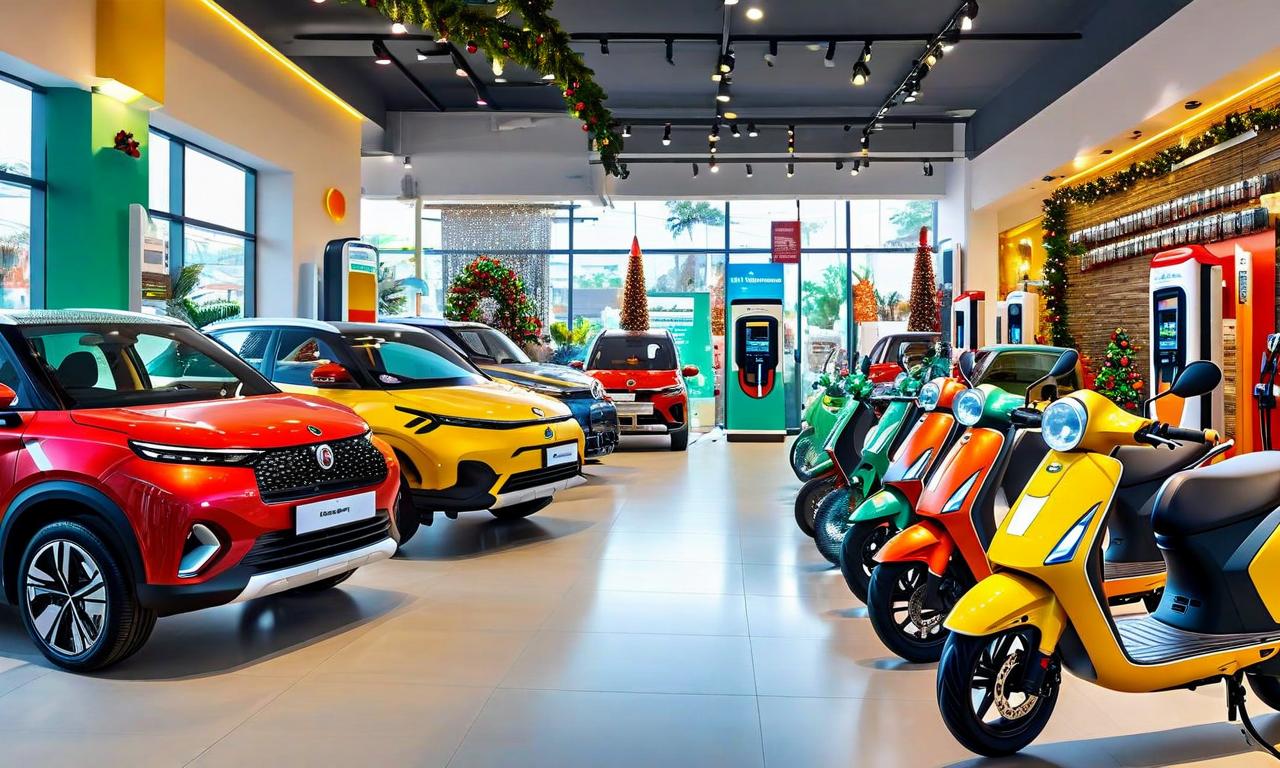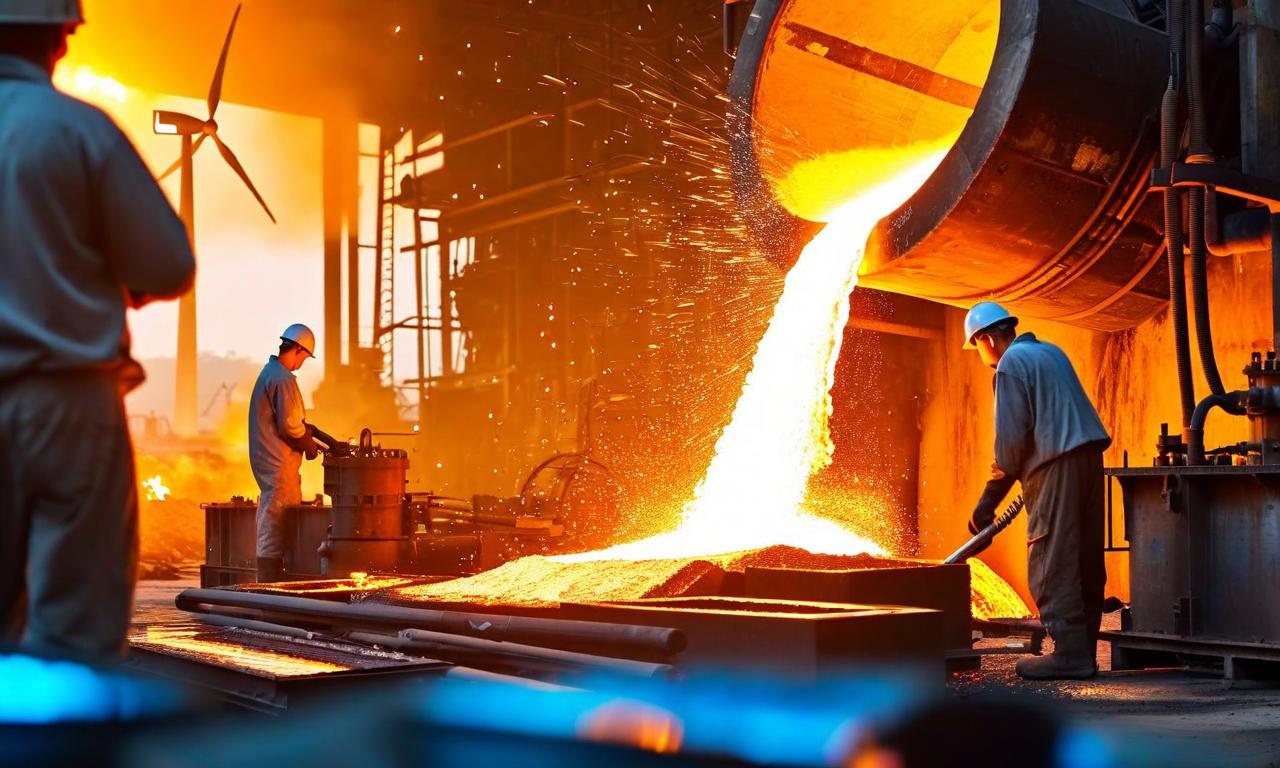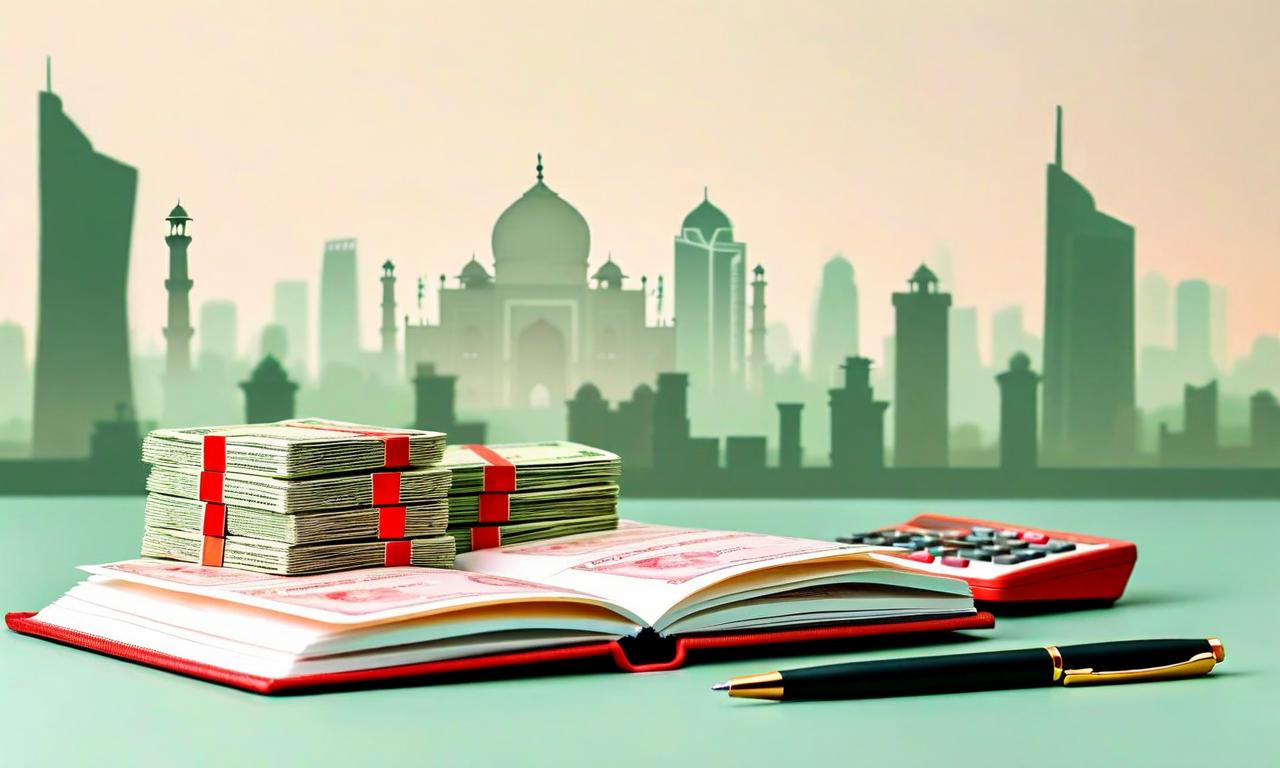Indian Auto Industry Reports Strong October Sales
The Indian automotive industry saw robust sales in October, boosted by festive demand and GST reductions. Maruti Suzuki led the four-wheeler segment with 1.8 lakh wholesale dispatches and 2.4 lakh retail sales, showing 20% year-on-year growth. Tata Motors followed, with notable growth in SUV and EV sales. In the two-wheeler market, Hero MotoCorp maintained leadership with 994,000 units sold, followed by Honda and Royal Enfield. The electric two-wheeler segment saw Bajaj Auto leading, while Ola Electric dropped to fourth place. The industry's performance indicates recovery and shifting consumer preferences towards SUVs and EVs.

*this image is generated using AI for illustrative purposes only.
The Indian automotive industry has reported strong sales figures for October. This performance, driven by festive demand and GST reductions on cars, has seen major players in both four-wheeler and two-wheeler segments achieving significant milestones.
Four-Wheeler Segment Performance
Maruti Suzuki, India's leading automaker, has reported high wholesale dispatches of 1.8 lakh units and retail sales reaching 2.4 lakh cars. This represents a 20% year-on-year growth, with small car sales particularly strong, increasing by 30% annually.
In the passenger vehicle category, Maruti Suzuki maintained its leading position, followed by Tata Motors. Here's a breakdown of their performance:
| Manufacturer | Units Sold | Notable Performance |
|---|---|---|
| Maruti Suzuki | 242,000 | 20% YoY growth, 30% growth in small car sales |
| Tata Motors | 75,000 | 77% YoY growth in SUV sales, 73% increase in EV sales (9,286 units) |
Tata Motors' performance in the SUV and EV segments is particularly noteworthy, indicating a consumer preference for these vehicle types.
Two-Wheeler Market Performance
The two-wheeler segment also reported growth, with Hero MotoCorp maintaining its market leadership. Here's how the major players performed:
| Manufacturer | Units Sold | Ranking |
|---|---|---|
| Hero MotoCorp | 994,000 | 1st |
| Honda | 820,000 | 2nd |
| Royal Enfield | 249,000 | - |
Royal Enfield reported strong festive performance, with 2.49 lakh motorcycles sold during September-October, marking a 26% growth.
Electric Two-Wheeler Segment: Market Shifts
The electric two-wheeler market saw some notable developments:
| Manufacturer | Units Sold | Market Position |
|---|---|---|
| Bajaj Auto | 31,168 | Market leader |
| Ola Electric | 16,000 | Dropped to 4th place |
Ola Electric has experienced a decline in market share, dropping from 50% in May to 11% currently, reportedly due to service-related issues.
Conclusion
The strong performance of India's automotive industry in October reflects a recovery and consumer confidence. The increase in sales across various segments, particularly in EVs and SUVs, indicates evolving consumer preferences and the industry's adaptability to these changing demands. However, the challenges faced by players like Ola Electric underscore the importance of after-sales service in maintaining market position, especially in emerging segments like electric vehicles.
As the industry continues to navigate recovery and adapt to new technologies, it will be important to monitor how these trends evolve and impact the overall market dynamics in the coming months.





























